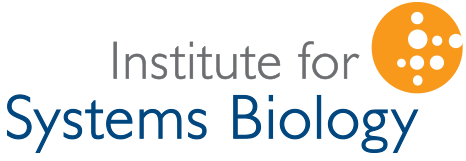EGRIN 2.0 is a systems-level model that delineates the complex relationship between environment, gene regulation, and phenotype in prokaryotes
Why EGRIN 2.0?
A foremost challenge in systems biology is to understand how just a few transcription factors (TFs) in a microbial genome generate a wide array of nuanced responses to varied environmental challenges. EGRIN 2.0 is a new model for the complete gene regulatory network (GRN) of a prokaryote. This model is reverse engineered directly from gene expression data and genomic sequence, and hence the methodology to generate EGRIN 2.0 is applicable to any prokaryotic organism.
More
The EGRIN 2.0 model demonstrates how environmental response programs are encoded in the distribution and complex organizations of cis-acting gene regulatory elements (GREs) across an entire prokaryotic genome. EGRIN 2.0 is remarkably accurate. It rediscovered the E. coli GRN governed by nearly two-thirds of its characterized TFs that have been carefully curated in RegulonDB from decades of work by numerous laboratories.
Strikingly, in addition to accurately recapitulating the architecture of well-characterized promoters in canonical locations, the model also revealed that there is widespread regulation at non-canonical locations –within genes and operons! The EGRIN 2.0 model also predicts the context and combinations in which TFs act at GREs in these canonical and non-canonical locations to coordinate transcription across the entire genome, to reorganize functionally-related genes from different operons and regulons into conditionally co-regulated modules or corems. Remarkably, corems capture fitness-relevant gene-gene associations that are NOT attributable to regulons, operons, or combinatorial control mechanisms!
We have inferred comprehesive models for two prokaryotic organisms: a bacterium (Escherichia coli K-12) and an archaeon (Halobacterium salinarum NRC-1).
This website facilitates targeted and exploratory investigation of the model's predictions.
Highlights from the paper
Genes
| Organism | Gene | Supporting Figure |
|---|---|---|
| E. coli | carA (b0032) | Figure 2 |
| E. coli | pyrL (b4246) | Figure S3 |
| H. salinarum | kdpA (VNG6176G) | Figure 2 |
| H. salinarum | dppA (VNG2349G) | Figure 3 |
Corems
| Organism | Corem | Supporting Figure |
|---|---|---|
| E. coli | nucleotide corem (ec516031) | Figure 4 |
| E. coli | purine corem (ec516034) | Figure 4 |
| E. coli | pyrimidine corem (ec512157) | Figure 4 |
| H. salinarum | dpp corem (hc21645) | Figure 3 |
| H. salinarum | dpp leader corem (hc6326) | Figure 3 |
| H. salinarum | dpp permease corem (hc21279) | Figure 3 |
